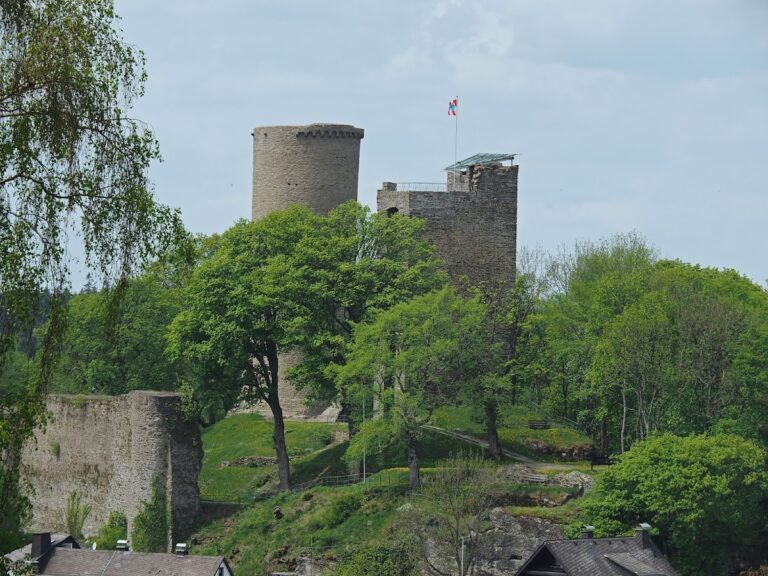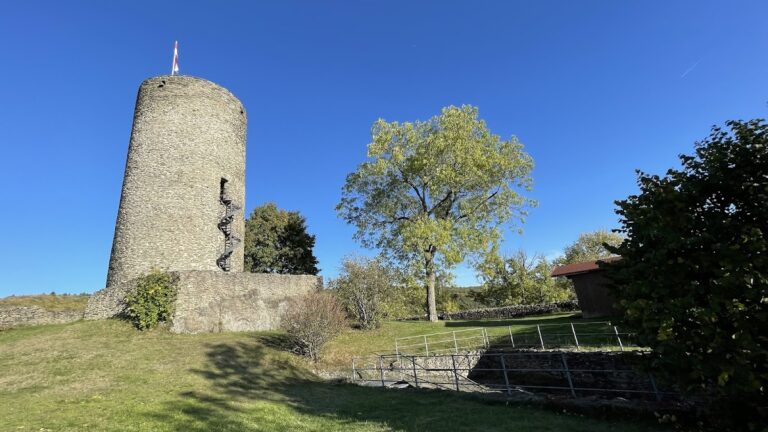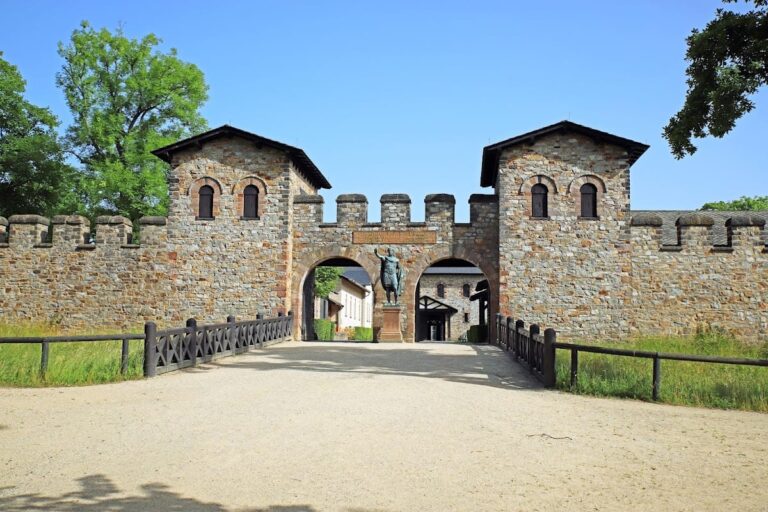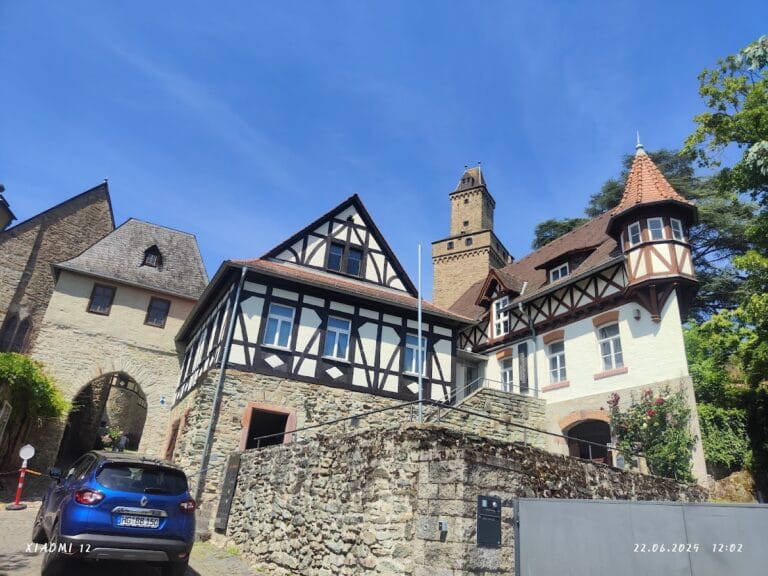Burg Hattstein: A Medieval Castle in Schmitten im Taunus, Germany
Visitor Information
Google Rating: 4.2
Popularity: Very Low
Official Website: www.burgenwelt.org
Country: Germany
Civilization: Unclassified
Site type: Military
Remains: Castle
History
Burg Hattstein stands within the municipality of Schmitten im Taunus, Germany. It was constructed by medieval Germanic nobility, though the exact date of its establishment remains uncertain. The castle likely predates the nearby Burg Reifenberg, indicating its early importance in the region.
The first recorded mention of Burg Hattstein occurs in 1156, in the foundation document of the Walsdorf monastery. This record names a “Guntramus de Hazechenstein,” who was presumably the lord of the castle at that time. This establishes the site as a noble residence and local power center already in the mid-12th century.
During the 14th century, the knights associated with Burg Hattstein gained a reputation as robber barons. Their aggressive raids attracted military responses, notably in 1379, when forces from the Free Imperial City of Frankfurt and its allies captured the castle during a campaign aimed at restoring peace. The castle’s lords pledged to stop these attacks and temporarily regained control. However, hostilities continued, including a notable assault in 1387 on the nearby Thron monastery.
Repeated efforts to subdue Burg Hattstein followed in 1393 and 1428 but failed to seize it. Despite kinship ties with the neighboring Reifenberg family, rivalry and conflict erupted between the two castles’ inhabitants, culminating in the period known as the “Hattstein Feud” from 1428 to 1435. In 1432, an alliance of the Reifenberg family with Frankfurt and Kurmainz forces successfully took the castle. After this conquest, Burg Hattstein was managed as a Ganerbschaft—a joint inheritance—shared by Frankfurt and Mainz until 1468.
Conflict persisted beyond this. In 1467, Walter von Reifenberg captured and deliberately damaged the castle, an act known as slighting, to reduce its military function. The following year, the Hattstein family regained possession and began reconstruction efforts. This restoration lasted approximately three decades, after which the castle slowly declined and eventually fell into ruin.
Unlike Burg Reifenberg, which was held as an allodium (full ownership), Burg Hattstein was a fief, partially under the authority of the Electorate of Trier. In 1614, Philipp Georg von Hattstein sold his share to Johann Heinrich von Reifenberg, but incomplete payment led to a legal dispute that remained unresolved until the Hattstein family died out in 1767.
Remains
Burg Hattstein was built as a spur castle on a wooded ridge of the Sängelberg hill. Its design took advantage of the natural terrain, with defensive works adapting to the ridge’s contours. Today, the most prominent feature that marks the former site is a deep ditch that encircles a raised area where the castle once stood. This defensive trench would have served to hinder attackers’ advance by creating a physical barrier.
Remnants of the castle’s shield wall remain visible at the site. A shield wall is a thick defensive wall positioned to protect the most vulnerable or exposed side of a castle, typically constructed robustly to withstand assaults. Although only fragments survive, these remains indicate the castle’s efforts to fortify itself against attacks during its active centuries.
Access to the old castle site is marked by trails from the surrounding areas, including the Weiltal valley, Oberreifenberg, and Schmitten. A narrow path follows the outline of the existing wall and leads to a small terrace situated within the former castle grounds. This terrace lies below the former defensive walls and does not provide panoramic views, reflecting its possible use as a courtyard or working area rather than a lookout point.
No further architectural details, such as gates, staircases, or inscriptions, have been documented. The ruins remain primarily as earthworks and wall fragments rooted in their original locations. Historical drawings and photographs exist, capturing the layout and appearance of the ruins before further decay, but structural specifics are not detailed in surviving records.
Overall, the site of Burg Hattstein retains key archaeological features that reflect its medieval origin as a fortified noble residence. Its defensive earthworks and scattered masonry continue to reveal the presence of a once-significant castle amid the woods of the Taunus hills.







